Carry-on sizing gotchas: avoid gate fees on ultra-low-cost fares
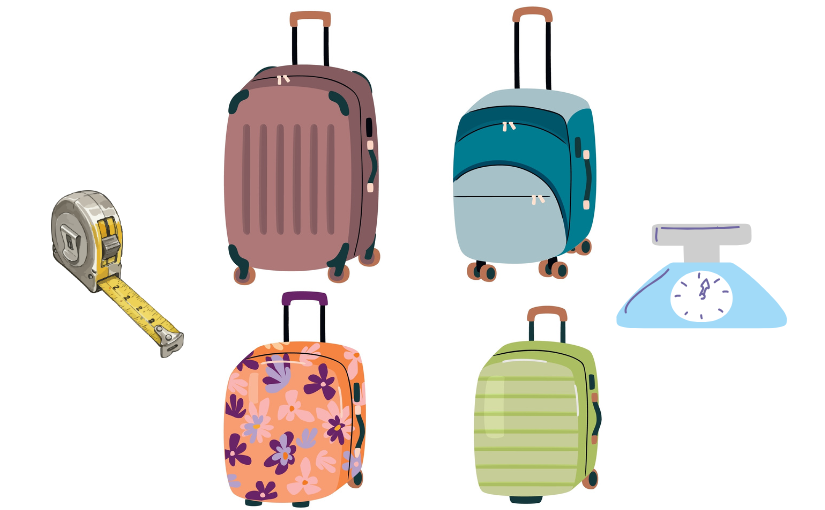
Has a gate agent ever pointed at the metal sizer and you instantly felt your stomach drop?
I’ve been there. My low fare felt like a win—right up until a sizer check on a packed flight turned into a $99 gate fee. That single moment changed how I pack, what I carry, and the way I move through the airport. The good news: with the right bag and a few smart moves, you can breeze past the sizer and keep your wallet shut.
“If it doesn’t fit, it doesn’t fly.” On ultra‑low‑cost carriers, the sizer is the rulebook, not a suggestion.
The problem no one advertises
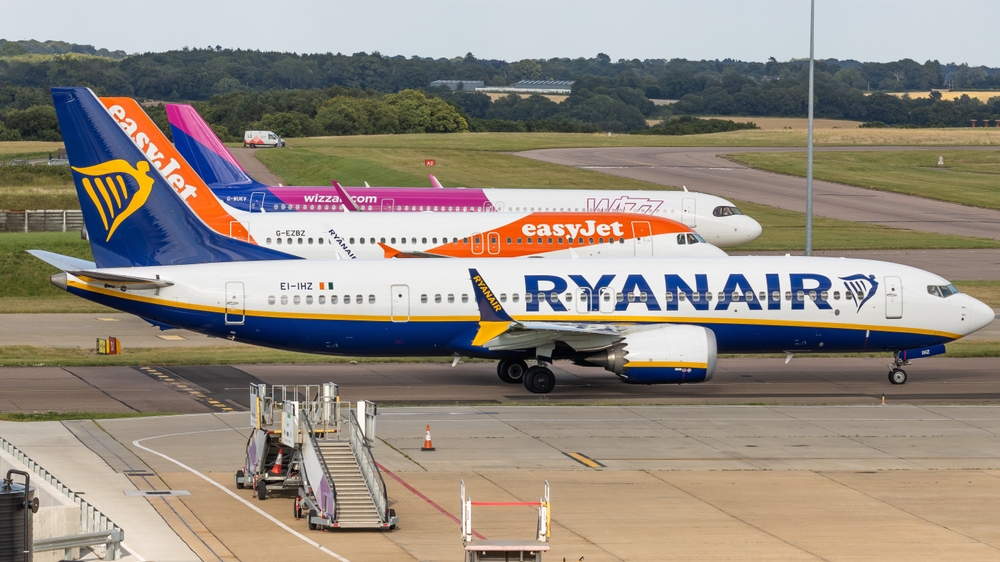
Ultra‑low‑cost carrier (ULCC) fares look cheap—until your bag doesn’t fit the underseat “personal item” box and you get hit with a surprise gate fee. It’s not rare either. Airlines rely on ancillary fees (bags, seats, extras), and the numbers are big: industry reports put global ancillary revenue at well over $100 billion a year, and U.S. carriers alone take in billions just from baggage fees. That incentive shows up at the gate.
Here’s what trips people up most:
- Every airline’s box is different. Spirit, Frontier, Allegiant, Ryanair, Wizz, easyJet—each has its own underseat size, often by a couple of centimeters or an inch. That’s the difference between a wave-through and a wallet hit.
- Wheels and handles count. Agents measure total external dimensions. A “17-inch” roller can easily be 19–20 inches after wheels and top handle—and that’s game over for underseat rules.
- Soft bags bulge when actually packed. A backpack that measures “fine” empty can swell past the frame once you add shoes, chargers, and toiletries.
- Gate enforcement is inconsistent. You might breeze through on one flight and be forced to sizer-test on the next. Full flights, late boarding, and “all bags in sizers” announcements mean higher risk.
- Fees are painful. Expect $60–$120 at the gate if your “personal item” fails the sizer on many ULCCs. In Europe, some carriers quote a flat euro amount; in the U.S., the fee often ramps up closer to departure.
Real talk from my own trips:
- Ryanair at STN: I’ve watched agents calmly wheel a line of sizers to the gate and test almost everyone boarding late. Those who passed had slim, soft backpacks. Bulky tote + sneakers inside? Not so lucky.
- Spirit at FLL: I’ve seen empty-looking rollers get measured and fail due to wheel height. Soft duffels slid under the seat and had zero issues.
- JetBlue’s basic fares: Even on a friendlier airline, a restrictive ticket can limit you to a personal item. When you assume the overhead is included and it’s not, you pay.
What I’ll help you do
I’m going to make the confusing stuff simple so you can travel light without surprise fees:
- Spot size traps by airline so you pick a bag that actually fits Spirit, Frontier, Ryanair, Wizz, easyJet, Allegiant—and what to know for JetBlue on bare-bones fares.
- Measure your bag at home with easy tape-and-cardboard tricks that mimic a real sizer.
- Pack to reduce “bulge” with tactics that shrink your footprint and keep the profile slim.
- Beat gate checks with timing, boarding, and quick “flatten” moves if you are asked to test.
- Know your options on JetBlue so you avoid a carry-on fee or use perks that unlock overhead space.
Why I’m confident this works: I’ve tested underseat backpacks and slim duffels across multiple ULCCs on both sides of the Atlantic. When you respect the smallest box and pack for compression—not just capacity—you’ll almost always slide under the seat and keep your money.
Who this helps
- Personal-item-only flyers: Weekend warriors, minimalist travelers, and anyone avoiding checked or overhead bags.
- Families on deals: Parents trying to avoid paying for four “cabin bags” on European budget carriers.
- Students and backpackers: Those bouncing across Europe or the U.S. on promo fares with strict rules.
- Business day-trippers: Traveling light with a laptop but still need to pass strict sizers.
- JetBlue basic fare buyers: People who assume a traditional carry-on is included—sometimes it isn’t.
If you’ve ever thought, “It’s just a small backpack, I’ll be fine,” and then faced a metal frame at the gate, this guide is your shortcut to a drama-free boarding. Ready to see exactly what “personal item only” means and how Spirit, Frontier, Ryanair, Wizz, easyJet, Allegiant—and yes, JetBlue—define their boxes, including whether wheels count?
Keep reading—next up I’ll lay out the rules at a glance so you can pick the right bag the first time and skip the sizer roulette.
Know your enemy: ULCC bag rules at a glance
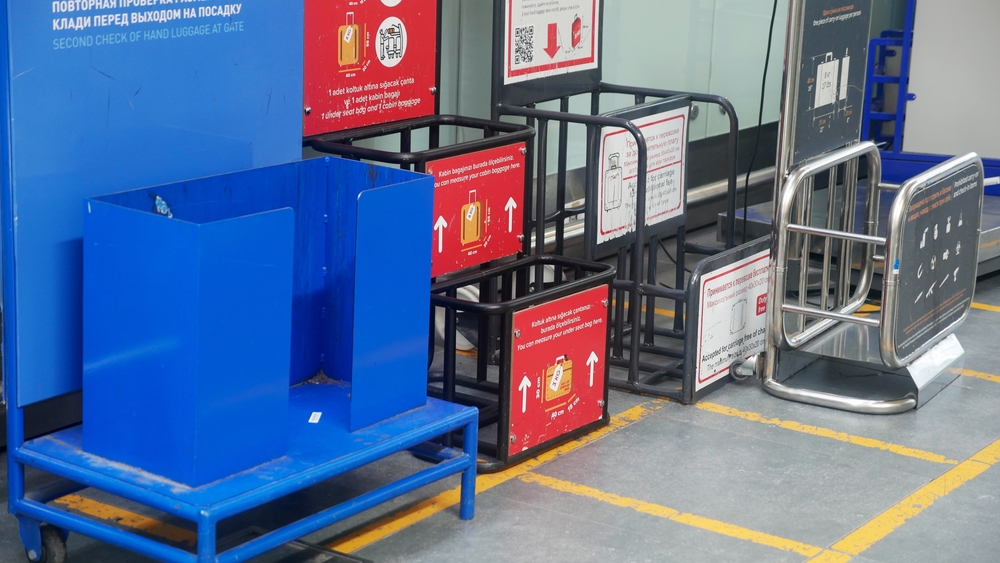
What “personal item only” actually means
When a fare says “personal item only,” it means one underseat bag that must slide fully under the seat in front of you. No overhead bin rights, no second bag, and yes—if it won’t go all the way under, you can be charged at the gate.
“If it doesn’t slide, it doesn’t ride.”
Agents are trained to look for three things:
- Fit: The entire bag goes under the seat without force.
- Size: Your bag must meet the airline’s “personal item” dimensions.
- Shape: Rigid shells and bulging pockets get flagged first.
ULCCs keep fares low and make up the difference with extras. Industry data shows ancillary revenue (bags, seats, etc.) hit record highs in recent years, so assume bag rules are enforced—especially on busy flights.
Common size boxes by airline (US + Europe) and how they differ
ULCCs use tight “boxes” (their sizer frames). The numbers look small because they are. Here’s the quick reality check:
- Spirit (US): 18 x 14 x 8 in (46 x 36 x 20 cm) personal item.
Policy.Notes: The famous “18x14x8” box. Soft backpacks and slim duffels pass most reliably. - Frontier (US): 14 x 18 x 8 in personal item (same volume, order reversed).
Policy.Notes: Same constraints as Spirit; staff often walk the line pre-boarding with sizers. - Allegiant (US): 7 x 15 x 16 in personal item.
Policy.Notes: Lower height (7″) catches people with thicker packs; keep it flat. - Ryanair (Europe): 40 x 20 x 25 cm underseat bag.
Policy.Notes: Very strict; metric sizers everywhere. “Priority & 2 Cabin Bags” adds a 55 x 40 x 20 cm, 10 kg carry-on. - Wizz Air (Europe): 40 x 30 x 20 cm free underseat bag.
Policy.Notes: Slightly wider than Ryanair (30 cm vs 25 cm), but shorter in height. “WIZZ Priority” adds a 55 x 40 x 23 cm trolley up to 10 kg. - easyJet (Europe): 45 x 36 x 20 cm small cabin bag (underseat) included.
Policy.Notes: More generous underseat box than Ryanair/Wizz. Large 56 x 45 x 25 cm cabin bag is paid or included with certain seats/status.
Why this matters: a bag that aces Spirit and Frontier’s 18 x 14 x 8 tends to pass nearly all US personal-item sizers. In Europe, the toughest “small bag” is Ryanair’s 40 x 20 x 25; if you’re good there, you’re usually fine elsewhere (Wizz is similar, easyJet is kinder).
Pro tip: US sites list inches, EU sites list centimeters. Double-check your conversions and watch your thickness—that’s what gets people caught.
Do wheels and handles count? Yes—how agents measure and why a soft bag helps
Yes, they count every millimeter. Gate agents look at the outermost points of your bag: wheels, feet, side handles, stuffed pockets, bottle sleeves, even a sagging laptop pouch.
- How sizers work: They’re rigid frames. The bag must drop in cleanly, without squeezing or force. If you have to press, you’re at risk.
- Wheels = height risk: Add 1–2 inches to a wheeled bag’s “marketing” size. That’s why many roller “personal items” fail 18 x 14 x 8 or 40 x 20 x 25 boxes.
- Soft beats hard: Soft backpacks and duffels compress at the corners and along the top—exactly where sizers snag hard shells.
- Shape matters: Slim rectangles and tapered tops slide in; rounded or boxy shapes get stuck.
I’ve watched agents measure by laying the bag on its “fattest” side first or flipping it to check the largest dimension. On strict carriers (Ryanair, Spirit), assume they’ll try both orientations.
JetBlue, Southwest, and legacy comparisons: when a standard carry-on is included, when it’s not
Not every airline plays by ULCC rules. Knowing who includes an overhead carry-on changes the bag you pack and how you board.
- JetBlue: Some fares restrict overhead carry-on (historically Blue Basic), while others include it. Perks like Mosaic status, certain co-branded cards, premium seats, and some long‑haul routes can restore carry-on rights. Always check your exact fare on JetBlue’s page before you book.
Policy. - Southwest: Overhead carry-on is included for everyone, plus two free checked bags. Underseat rules are generous, but keep your second item small.
Policy. - United Basic Economy (US): Often no full-size carry-on on domestic routes unless you have status, a co‑branded card, or are on select international routes.
Policy. - American Basic Economy (US): Includes a full-size carry-on on most routes.
Policy. - Delta Basic Economy (US): Includes a full-size carry-on.
Policy.
Strategy shift:
- Overhead included: Bring a standard 22 x 14 x 9 in (56 x 36 x 23 cm) carry-on and a small personal item. Board as early as you can to secure bin space.
- Overhead not included: Treat it like a ULCC. Pick a true underseat personal item that fits the strictest box you’ll face on your itinerary.
- Mixed tickets/alliances: The tightest rule usually wins at the gate. If one segment is ULCC-style, plan for that box across the whole trip.
Small gotchas that catch good travelers
- Metric vs. imperial: A “perfect” 20 cm thickness is 7.87 inches—many bags marketed as 8″ thick won’t pass a 20 cm frame if they puff.
- Handles that steal space: That comfy top handle can push you over a tight height limit. Lay the bag handle-down in the sizer when allowed.
- Expandable zips: If your bag has them, keep them zipped flat. Even a 1″ expansion can trigger a fee.
Here’s the fun part: once you know the exact box you’re playing to, you can measure your bag at home and pack to shape—so it glides in, every time. Curious how to test your bag in 60 seconds with a roll of tape and a cardboard box? Let me show you next…
Measure like a pro (at home, before you fly)
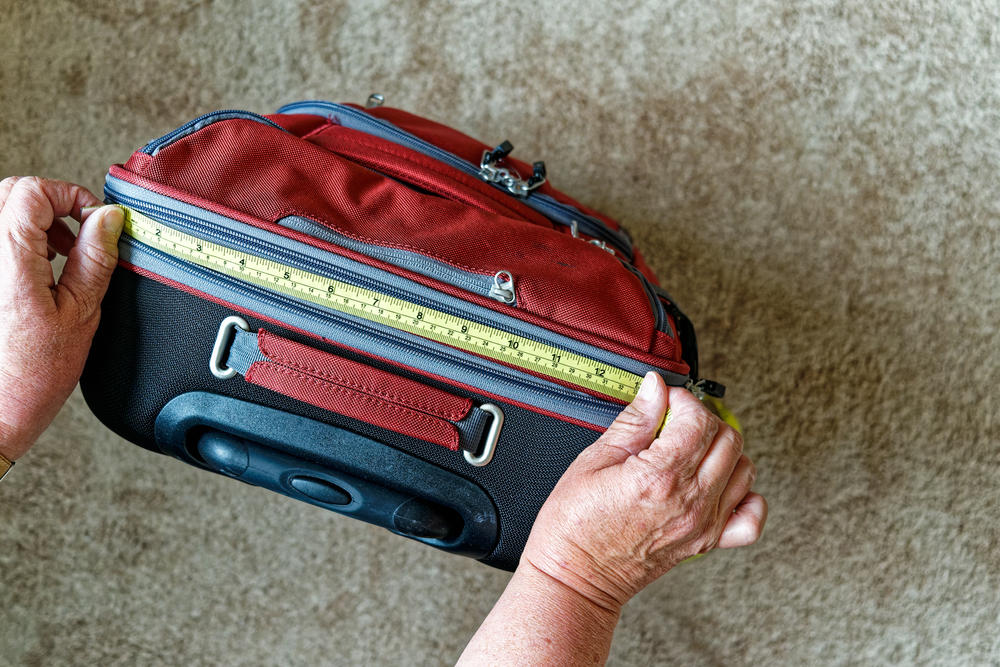
“What gets measured gets managed.” — Peter Drucker
If a bag fee at the gate feels like highway robbery, the antidote is measuring at home—accurately, with your real stuff packed. Here’s the simple setup I use to make sure my “personal item” slides into those metal frames, from Spirit and Frontier to Ryanair and Wizz.
DIY sizer: tape the box, then stress-test it like a gate agent
You don’t need an actual sizer to know if you’ll pass. Build your own in five minutes:
- Pick the right box size for your airline: common “personal item” frames include:
- 18 x 14 x 8 in (46 x 36 x 20 cm) — often used by Spirit/Frontier
- 16 x 15 x 7 in (41 x 38 x 18 cm) — Allegiant’s stated personal item
- 40 x 20 x 25 cm — Ryanair’s underseat allowance
- 40 x 30 x 20 cm — Wizz Air’s underseat allowance
- 45 x 36 x 20 cm — easyJet’s underseat allowance
Always verify on the airline’s site for your exact fare before you tape.
- Painter’s tape rectangle: on a hard floor, tape a rectangle matching your airline’s L x W. Depth (thickness) is the third number.
- Cardboard frame: cut a “U” shape from a moving box so the inner opening equals the airline’s W x H. Slide it down over the packed bag. If any part sticks, it won’t pass a rigid sizer.
- Wheels and handles count: measure the absolute outer shell—every wheel, foot, handle bump. Agents do.
- Gate-pressure test: press the bag with your forearm as you slide it into your taped box. If it slides with firm pressure and springs back, that’s realistic. If it mushrooms out elsewhere, fix your packing (see below).
- Underseat slide: set two dining chairs 18 in (46 cm) apart to mimic seat legs. Slide your bag under a chair or coffee table that’s about 9–10 in (23–25 cm) high. If it hangs up, your depth is the problem.
- Photo proof: snap a photo of your bag inside your DIY frame. It’s confidence in your pocket if someone eyeballs you at the gate.
If you want a quick industry reference while you measure, IATA’s historic cabin baggage guidance sits around 55 x 35 x 20 cm for standard carry-ons, but ultra‑low‑cost carriers often enforce smaller “underseat/personal item” boxes—exactly why this home test matters. Check IATA info, then stick to the smaller box your fare actually allows.
Soft vs. hard bags: control the “bulge” (the real gate killer)
Hard-shell “personal items” look tidy but lose when pushed into a sizer—they don’t flex. Soft bags win because smart compression turns “too big” into “fits right now.”
- Compression beats empty specs: a soft duffel labeled 18 x 14 x 9 in can often compress to the 8 in depth most U.S. ULCCs require. A hard case cannot.
- Strap strategy:
- Use two horizontal compression straps to flatten depth; run one low, one mid-bag.
- Cinch from the back panel toward the front so the side facing your legs stays flat under the seat.
- Pack to shape the bag: heavy, flat items (laptop, book, toiletry brick) against the back panel; soft items (tee, scarf) at the front to create a slight taper.
- Mind the “puff points”: shoes and hoodies create local bulges that push depth past the limit. Split pairs (toe-to-heel) and fill shoes with socks to keep them rectangular.
- Reality check: I’ve taken a soft 18 x 12 x 10 in duffel, loaded, down to 18 x 12 x 8 in with two straps and smart placement. That 2-inch depth swing is often the difference between “fee” and “free.”
Not all soft bags compress equally. If your backpack has thick foam panels or a rigid laptop frame, it will fight you. Look for pliable sides with light padding and external compression straps you can pull tight.
Weigh and measure with your real packing list inside
Empty dimensions are fantasy. Fill the bag as you intend to travel, then measure. My checklist:
- Pack for real: shoes, toiletries (3-1-1 liquids), chargers, power bank, a rolled tee or two, and the exact jacket you’ll bring—even if you plan to wear it. If weather flips, you might stash it.
- Put cables and bricks where they belong: tech piled in the front pocket balloons depth. Slide power banks and chargers flat along the back or into shoes.
- Weigh it: clip a small luggage scale to the top handle. Even when there’s no weight limit, a heavier bag expands and sag-bulges more. I use a 10% “swell buffer” to be safe.
- Re-test after a bathroom/shopping scenario: toss in a water bottle or a light souvenir and see if you still pass your tape box. If the fit is now tight, adjust your layout (or plan to hand-carry a drink until seated).
One surprisingly common fail: that last-minute charging brick. It’s dense and loves to sit in an outer pocket, which adds a deadly inch of depth. Either slip it inside a shoe or lay it flat against your laptop sleeve.
Underseat winners: shapes that pass most sizers
Certain silhouettes just slide under airline seats and into frames, trip after trip:
- Slim rectangle backpacks: 16–18 in tall, 11–13 in wide, and 6–8 in deep, with compression straps. Great for 15–16″ laptops and cube-friendly packing.
- Soft duffels: 16–18 in long and 8 in deep when cinched, with grab handles and a flexible shell. They squash into tight frames without drama.
- Tapered totes: slightly wider at the top, narrower at the base. They “keyhole” into sizers and underseat spaces thanks to the slimmer bottom profile.
What these shapes share: controlled depth. Height and width get all the attention, but it’s that third number that gets people charged at the gate.
Quick conversions when your ticket is in cm but your gear is in inches
- 8 in ≈ 20.3 cm
- 14 in ≈ 35.6 cm
- 18 in ≈ 45.7 cm
- 16 in ≈ 40.6 cm
- 15 in ≈ 38.1 cm
- 7 in ≈ 17.8 cm
- 40 cm ≈ 15.7 in
- 45 cm ≈ 17.7 in
- 36 cm ≈ 14.2 in
- 30 cm ≈ 11.8 in
- 25 cm ≈ 9.8 in
- 20 cm ≈ 7.9 in
The 3-point “Will I pass?” check
- Box fit: packed bag fits your taped rectangle with firm hand pressure.
- Frame slide: cardboard “U” drops cleanly over wheels and handles with no snag.
- Underseat slide: goes under a 9–10 in high surface without scraping your knuckles.
Do those three at home and the sizer at the gate stops being a gamble. Want the next unfair advantage—how to make the same bag look and pack smaller without ditching essentials? I’ve got a few field-tested moves (including where to hide the heavy stuff). Ready to see them in action?
Pack small, fly free: tactics that shrink your footprint
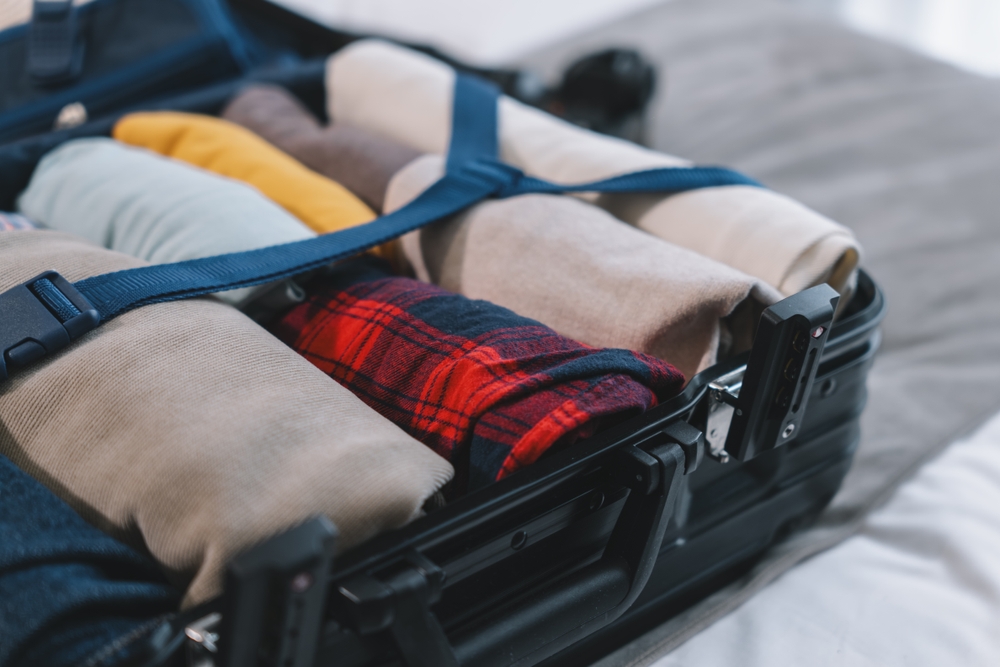
That heart-thud when a gate agent points to the sizer? It disappears when your bag is slim, tight, and obviously under-seat ready. Here’s exactly how I pack so a “personal item only” trip feels roomy, looks small, and glides past the frame.
“He who would travel happily must travel light.” — Antoine de Saint‑Exupéry
Wear the bulk: jacket, heavier shoes, and pocket strategy for chargers and snacks
On flight day, my outfit does half the carrying. If it looks intentional, nobody blinks—and your bag stays flat.
- Jacket = extra drawer. A lightweight shell or shacket with deep pockets holds my power bank, cords, phone, passport, and a bar. At security, I toss the whole jacket into a tray. At the gate, it’s “clothing,” not a second bag.
- Wear the heaviest shoes. Boots or chunky sneakers go on my feet. Pack the collapsible pair: knit runners, flats, or sandals.
- Hands-free, not bag-free. If you use a small sling or fanny pack, tuck it inside your main bag or under your jacket before boarding to avoid the “extra item” conversation.
- Boarding stash. Move your charger and earbuds to pockets while you wait. You’ll free a chunky corner in your bag and slide under the seat without bulging.
My fly-day formula: heaviest shoes, breathable tee, midlayer hoodie, light shell jacket. Everything else goes ultra-flat in the bag.
Compression cubes, straps, and the vacuum-bag warning
Compression helps—used right. The goal isn’t a rock-hard brick; it’s a low, even profile that doesn’t flare at the edges.
- One medium + one slim cube. I stack a medium cube (tops/underwear) and a slim cube (socks/shorts). Two smaller units pack flatter than one huge sausage.
- Manual compression over vacuum. Zippered compression cubes typically reduce soft clothes by roughly 25–35% in thickness when you don’t overstuff them. They also keep edges squared so the bag slides instead of snagging.
- Use external cinch. A simple luggage strap (or even a spare shoelace) wrapped around the short side of your bag pulls the “puffy belly” inward before you’re anywhere near a sizer.
- Vacuum/roll bags: handle with care. They look small at home, but if TSA opens them or you need something mid-journey, air rushes back and your bag balloons. They also wrinkle knits fast. I leave them for checked bags, not under-seat runs.
Pro move: Pack your cubes a touch under-full so the compression zip actually flattens. If you’re grunting to close it, it’s overdone and will bulge the moment you sit on the bag.
Shoes and toiletries: nest, stuff, and place to keep the bag from puffing out
Shoes and liquids are your shape-killers. Place them smartly and you’ll shave centimeters instantly.
- One packed pair max. Put soles together in a thin bag and stand them heel-to-toe along the back panel of your backpack or the bottom of a duffel. This creates a flat “spine” that resists bulge.
- Stuff the voids. Fill each shoe with socks, underwear, charging bricks, or a rolled belt. Empty space equals extra thickness elsewhere.
- Shrink your liquids by default. Decant into 10–15 ml dropper bottles; most trips don’t need 100 ml of anything. Solid toiletries (bar shampoo, bar soap, stick deodorant) cut volume and leak risk.
- Center the heavy stuff. Keep the 3-1-1 bag low and central so it doesn’t bulge a corner. A flat, rectangular pouch beats a round kit every time.
Clothes that cheat the sizer: materials and roll method
Fabric choice > folding technique. I aim for thin, flexible layers that compress without “springing back.”
- Favor knits and stretch weaves. Merino tees, thin cotton or poly-blend knits, and tech chinos compress flatter than heavy denim or stiff oxfords.
- Flat stack + compress. I stack garments in a rectangle then press inside a compression cube. Rolling is great for organization, but flat stacks usually win on thickness and create cleaner edges.
- Packable insulation. A micro‑down or synthetic puffer stuffs into its hood or a side pocket. Wear it in the airport if you need space, shed it on the jet bridge.
Tech tetris: flatten the hard stuff
The stiff items decide your silhouette. Arrange them as a “plate,” not a lump.
- Laptop tight to your back panel. This creates a rigid, flat wall that helps the bag slide into a sizer.
- Brick in a case. Put your power brick, mouse, and small cables into a thin sunglasses case or a flat pouch. Round pouches waste corners.
- Paperless mindset. Swap hardcovers and thick notebooks for an e‑reader and a single slim notepad.
Sample 3‑day kit that passes strict under‑seat boxes
This is my real-world weekend list that fits a 40 × 20 × 25 cm under-seat allowance when packed with the tactics above:
- Wear: jeans or tech chinos, tee, hoodie, light shell, bulky sneakers
- Pack: 2 tees, 2 underwear, 2–3 socks, 1 lightweight pant/short, 1 sleep short, 1 spare shoes (slim), micro‑puffer, compact umbrella, toiletries (under 1 quart), laptop/tablet + chargers, e‑reader
- Layout: shoes “spine” at the back; medium cube (tops/underwear) bottom; slim cube (socks/shorts) on top; laptop against back; toiletries centered low; tech pouch flat on the front
It’s not a miracle—just ruthless flattening and smart materials.
The “gate flatten” move: quick re‑pack tricks if you’re asked to sizer‑test
If you get the finger-point to the metal frame, stay calm. You’ve got a one-minute reset that changes the outcome.
- Step 1: Slim the profile. Tighten external compression straps. If your bag has expansion zips, make sure they’re zipped closed.
- Step 2: Pocket the pebbles. Move the power bank, cords, sunglasses case, and snack into your jacket pockets. Clothing pockets don’t count as a second item.
- Step 3: Flatten corners. Slide the densest cube to the bottom and center. Put the flexible cube up top so you can palm-press it flat as the bag goes in.
- Step 4: Angle, then straighten. Lead with the narrow end, angle diagonally into the frame, then square off with a gentle knee press on the top panel. Soft bags excel here.
- Step 5: Hold shape. Keep your hand on the top panel for three seconds while the agent sees it fully inside. Don’t let the zip or handle catch the rim.
Important: Don’t pull out a separate pouch and carry it—agents will count it. Pockets yes, extra items no.
Micro-wins that add up
- Swap thickness, not quantity. Two thin tees often pack flatter than one heavy one—and give you flexibility if you spill something.
- Elastic belts. A fabric stretch belt coils flat; a leather belt arches and steals space unless you thread it around the inside perimeter of your bag.
- Sock strategy. Ankle socks only, and they live inside shoes.
- Laundry on the road. A palm-size solid soap bar turns any sink into a washer. One wash mid-trip halves the clothes you need to bring.
You’ve now turned a “maybe” bag into a sure thing. But when do agents actually start measuring, and how do you board in a way that avoids the whole show? Ready to spot the exact cues—and the boarding tricks that make sizer checks less likely?
Game day: how to beat the gate trap
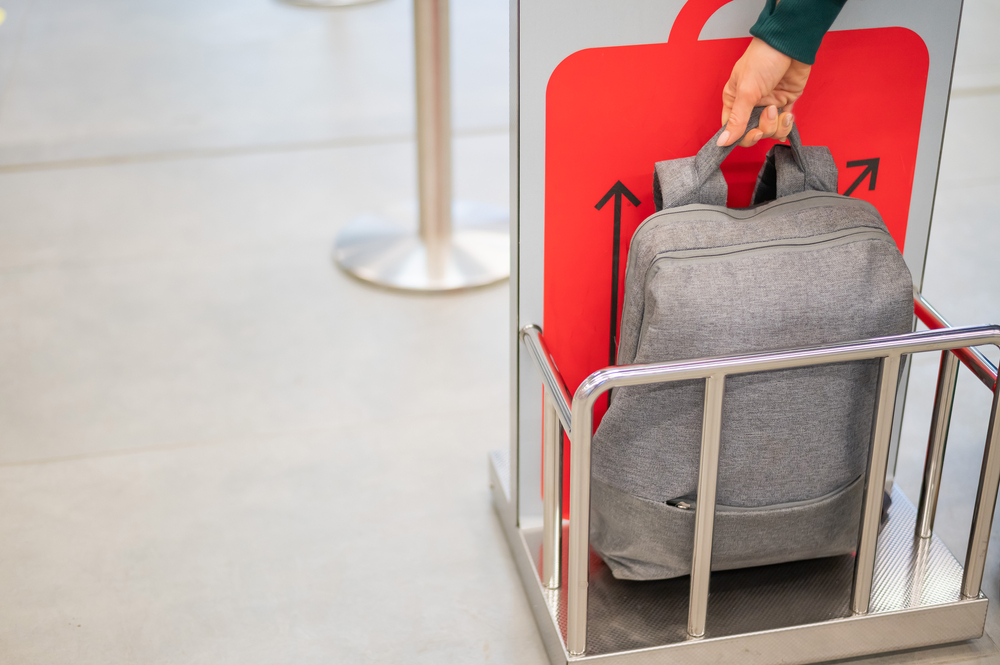
“There are only two kinds of carry-ons: the ones you’ve measured and the ones that cost you.”
I’ve felt that stomach drop when a gate agent points at the sizer. The trick is to read the room, move early, and have a script ready. Here’s how I keep my bag out of fee territory when it matters most.
Check-in and security cues that lead to sizer checks
Agents don’t measure every bag. They measure the bags that look risky and the bags on flights where they’ve been told to clamp down. I look for these signals:
- Visible sizers near check-in or the gate. If the frames are pulled forward and staff are hovering, enforcement is coming.
- Announcements about “one personal item only.” Especially on ultra-low-cost carriers. Multiple reminders usually mean active checks.
- Colored bag tags at the podium. Staff tagging personal items that pass? They’ll likely challenge untagged bags in later groups.
- “Full flight” or “limited overhead space” notices in the app. High load factors = tighter gate control. IATA reports passenger load factors near record highs in recent years, which lines up with my own experience of stricter gate checks when flights are full.
- Late boarding. If you stroll up with the last group, expect more scrutiny. Agents use the lull to sizer-test.
- Base airports and peak times. ULCC home bases and holidays are classic “all bags in the sizer” days. I’ll proactively tighten my pack when I see the gate team stacking pink tags.
Real-world snapshot: on a packed Friday night Frontier flight out of DEN, I watched the podium agent sizer-test almost every passenger from the last two groups—while earlier groups mostly slid by. Same week, an easyJet evening departure at LGW had a staffer walking the queue with a handheld sizer.
Boarding group strategy: why earlier boarding cuts your risk (and what’s worth it)
Getting on early helps two ways: fewer eyeballs on your bag and less time for “everyone must sizer-check” sweeps. Here’s what I’ve found worth paying for—only when it saves more than a potential gate fee:
- Ryanair Priority & 2 Cabin Bags. Usually low-cost and moves you up the queue. It includes the larger cabin bag (10 kg) that overheads require. If you need that extra bag anyway, this is the cheapest peace of mind.
- WIZZ Priority. Similar story: earlier boarding plus the overhead-size cabin bag allowance.
- easyJet Up Front/Extra Legroom. Early boarding plus a large cabin bag. If your bag is borderline for underseat, this is a clean solution.
- Spirit/Frontier “carry-on” add-on. Buying the carry-on often pushes you to an earlier zone. Spirit’s “Shortcut Boarding” alone does not add a bag; the carry-on purchase does—so I only buy Shortcut if the line is chaos and my bag already fits as a personal item.
- Allegiant Priority Boarding. Cheap and helpful for early access, but it doesn’t add bag allowance—only pay if it helps you avoid a sizer sweep and your bag truly fits underseat.
My rule: I’ll pay a small early-boarding fee if my bag already fits the personal-item box and the gate looks aggressive. But if I know I’ll want an overhead-size bag, I pay for the legit larger-cabin option that includes priority—don’t double spend.
Prepay vs. gamble: the quick math that keeps your wallet shut
Gate fees are almost always the most expensive way to “buy” a bag. IdeaWorksCompany’s ancillary revenue reports show how much airlines rely on these extras—which is a polite way of saying the house usually wins.
Use this 10-second check:
- Expected gamble cost = Probability of enforcement × Gate fee
- Prepay cost = What the app/website charges you today
If your expected gamble cost is higher than prepay, don’t gamble.
Examples I’ve seen recently (ranges shift by route and date, always verify on the airline’s page before you buy):
- Spirit/Frontier (US): prepay carry-on often $40–$65; gate fee often around $99. If I think there’s even a 50% chance of enforcement, the expected gamble is ~$50—already at or above prepay. I prepay.
- Ryanair (EU): Priority & 2 Cabin Bags often €6–€30; being forced to gate-check a non-compliant bag can run ~€45–€60. If enforcement feels 40%+ likely (common on full, peak flights), I buy Priority.
- Wizz/easyJet (EU): Priority/large cabin bag add-ons are often far cheaper than gate rates (easyJet’s gate fee for oversized cabin bags can be around £48–£60/€58–€70). I only gamble on truly underseat bags.
One more wrinkle: some airlines display a lower bag price in-app up to boarding. If you see sizers rolling out, buy the carry-on in the app before you reach the podium—it’s usually cheaper than the price at the desk.
What to say if challenged: polite script, bag techniques, and when to step aside
Confidence helps, but kindness wins. I keep it short and calm:
- Lead with fit: “I measured this to your underseat size. It’s soft-sided and fits under the seat.”
- Ask to prove it: “May I place it under the seat or try your sizer?”
- Offer to adjust: “I can take the laptop and bottle out and compress it right now.”
Then do the 60-second fix:
- Remove hard items: laptop, water bottle, power bank. Hold them or put them in your coat pockets.
- Wear the bulk: zip up your jacket with a hoodie or scarf inside. Agents care about bag dimensions, not your puffy look.
- Compress smart: cinch straps; push air out; place the bag flat side-first into the sizer; rotate as needed. Soft bags win here.
- Underseat proof: if there’s a demo seat at the jet bridge, slide it under to show it clears.
If they still say no:
- Step aside, not away. “I’ll repack and try again—thank you.” Stay within sight; you’re not giving up your boarding spot.
- Buy smart, not at the highest rate. Before they ring you up, check the airline app for a lower carry-on price. Sometimes it’s still available until your pass is scanned.
- Document politely. If you believe the bag meets the published size, ask to try the sizer again and take a quick photo. Keep the receipt; it helps if you request a credit later.
Two quick case notes from my notebook:
- Spirit at FLL: I watched an agent wave through three passengers who smoothly slid slim backpacks under the test seat after removing laptops—while two roller bags got hit with the $99 gate fee on the spot.
- Ryanair at BGY: Non-Priority passengers with tall totes were stopped until they either paid or reshaped into the sizer. One traveler turned a near-miss into a pass by moving shoes to coat pockets and compressing straps—took 45 seconds.
Last tip: pace your approach. If you’re in a late group and see a sizer sweep, make your bag visibly smaller before you reach the podium—jacket on, laptop out, bottle out, straps cinched. You’ll look compliant, which reduces the urge to test you.
Curious which airlines are the strictest, what their exact personal-item boxes are, and where the hot spots live? I’ve mapped them out next—right down to typical gate fees and “gotcha” airports you’ll want to know before you book.
Reference: IdeaWorksCompany ancillary revenue reports
Airline-by-airline gotchas you should know
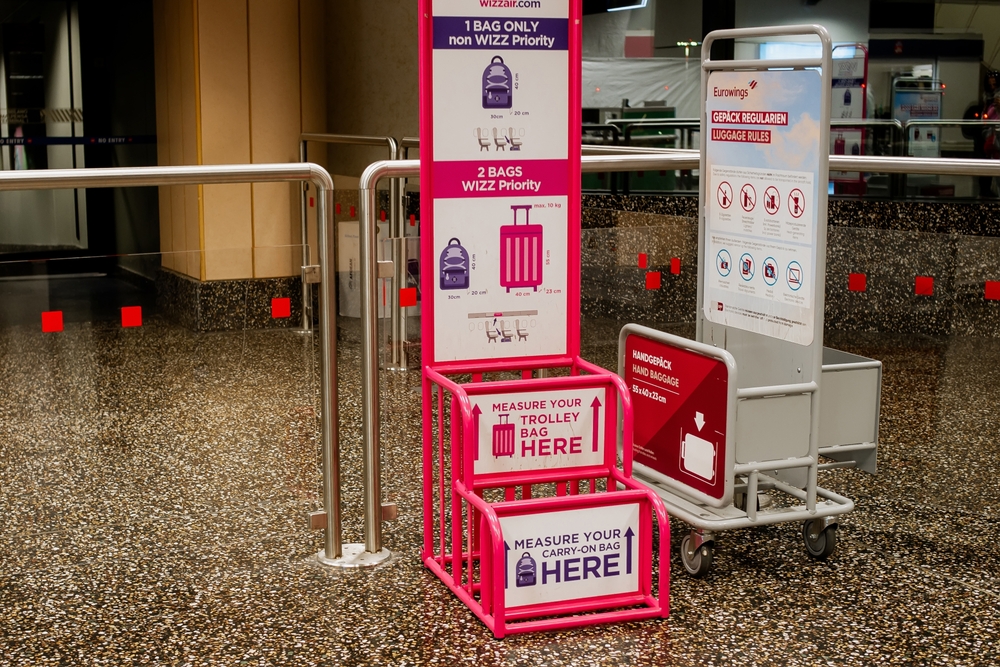
US ultra‑low‑cost traps: Spirit, Frontier, Allegiant
“Nothing ruins a cheap fare faster than a $99 surprise.” If there’s one line I hear from readers over and over, it’s that. Here’s how each US ULCC tries to make that surprise happen—and how to sidestep it.
- Spirit — personal item max 18 x 14 x 8 in (45 x 35 x 20 cm), wheels and handles count.
- Gate sting: Often $99 if your bag doesn’t fit and you didn’t prepay for a carry‑on.
- Hot spots: FLL, MCO, LAS, ORD, DFW see frequent sizer use—especially on full flights and peak times.
- Quirk that gets people: That 8-inch depth is tight; soft bags pass more than mini hard-shells.
- Spirit baggage policy
- Frontier — personal item max 14 x 18 x 8 in (same footprint, different order).
- Gate sting: Commonly $99 if measured at boarding and it doesn’t fit.
- Hot spots: DEN, MCO, LAS, ATL, PHX—look for roving agents with mobile sizers near the queue.
- Quirk that gets people: Frontier often flips the measurement language (H x W x D) but the box is still 18 x 14 x 8—don’t mix the sides up.
- Frontier baggage options
- Allegiant — personal item max 16 x 15 x 7 in (41 x 38 x 18 cm).
- Gate sting: Listed $75 “gate bag fee” if your item is too big or you brought an unpaid carry‑on.
- Hot spots: Leisure routes and smaller bases like LAS, PIE, PGD, AZA; crackdowns are common during weekend peaks.
- Quirk that gets people: The 7-inch depth is the trap. A bulging laptop backpack that’s fine on other ULCCs can fail here.
- Allegiant baggage allowances
Tip: Prepaying a carry‑on is almost always cheaper than getting caught. On these three, you’re typically looking at ~$39–$69 in advance vs. ~$75–$99 at the gate if you’re flagged.
Europe’s strict sizers: Ryanair, Wizz, easyJet
Metric frames, metal boxes, and no mercy when the queue is long. If you’re doing a cheap hop across Europe, treat these sizes as the law.
- Ryanair — free small bag 40 x 20 x 25 cm under the seat.
- Add-on that saves money: Priority & 2 Cabin Bags gets you a 55 x 40 x 20 cm roller (10 kg) plus your small bag.
- Gate sting: Oversize or extra bag without Priority is usually up to ~€69.99/£69.99 at the gate.
- Hot spots: STN, DUB, PMI, BCN—expect line-side sizers and active checks on busy flights.
- Quirk that gets people: The 20 cm depth is non-negotiable; bulging totes fail. A sealed duty-free bag is allowed in addition to your small item.
- Ryanair bags and fees
- Wizz Air — free small bag 40 x 30 x 20 cm.
- Add-on that saves money: WIZZ Priority adds a 55 x 40 x 23 cm trolley in the cabin.
- Gate sting: Typically ~€35–€60 if you show up with an unpaid larger bag; can be higher if it must go in the hold.
- Hot spots: BUD, OTP, WAW—teams patrol the queue with handheld sizers on peak departures.
- Quirk that gets people: Their small-bag width (30 cm) feels generous—until you overpack; depth still must be 20 cm.
- Wizz Air baggage
- easyJet — free underseat bag 45 x 36 x 20 cm.
- Add-on that saves money: Buy a Large Cabin Bag (56 x 45 x 25 cm) or select Up Front/Extra Legroom which includes it, or fly with easyJet Plus.
- Gate sting: Turning up with an unpaid large bag is often about £48/€60 at the gate to put it in the hold.
- Hot spots: LGW, LTN, MAN, AMS, CDG; checks spike during school holidays.
- Quirk that gets people: That 20 cm depth again—keep the profile flat and you’re golden.
- easyJet cabin baggage
Heads-up: On all three, agents use rigid metal frames. If it doesn’t slide in easily without force, they’ll charge. A soft, compressible shape beats a boxy hard-shell every time.
JetBlue: the fine print that stops surprise fees
JetBlue isn’t a ULCC, but its cheapest ticket plays by similar rules. This is where a lot of US travelers get tripped up.
- Blue Basic (the restrictive one):
- No overhead carry‑on allowed on most routes—only a personal item that fits under the seat (max 17 x 13 x 8 in).
- Exceptions: Transatlantic flights do allow a carry‑on, and Mosaic status and active U.S. military are exempt.
- Gate sting: Bring an overhead bag anyway and you’ll pay checked-bag fees at the gate—typically $65 for the 1st/2nd bag or $180 for a 3rd.
- Which fares include a carry‑on? Blue, Blue Extra, Blue Plus and Mint include an overhead carry‑on. Mint also includes two checked bags.
- Credit card perk reality check: The JetBlue Plus Card gives a free checked bag, but it doesn’t override the Blue Basic carry‑on restriction. Use it if you need to check a bag; don’t expect it to unlock overhead space on Blue Basic.
- Real-world examples:
- JFK–FLL on Blue Basic with a 22″ roller? Expect to pay at the gate. Bring an underseat bag instead.
- JFK–LHR on Blue Basic? A carry‑on is allowed on transatlantic, so your 22″ roller is fine.
- JetBlue baggage allowances
Pro tip: A lot of folks try to “solve” Blue Basic by buying Even More Space. Don’t. It doesn’t change the no–carry‑on rule for Blue Basic—save the cash or buy a higher fare.
Aircraft and seasonality: when enforcement spikes no matter the airline
Some days every bag gets a free pass. Other days it’s “all bags in the sizer.” Here’s when the hammer comes down.
- Regional jets and small bins: On E175/E190 (common on US routes), standard 22″ rollers often won’t fit wheels‑first. Even if your fare allows a carry‑on, you may have to gate-check. A220s and A321neos tend to have larger bins, but space still fills up fast on full flights.
- Holiday and school-break crackdowns: Thanksgiving, Christmas/New Year, and summer school holidays see the strictest checks. Teams use sizers to speed boarding when bins will be jammed. The US DOT’s monthly Air Travel Consumer Reports routinely show higher complaint volumes in peak months—a good proxy for travel stress and tighter operations. See DOT reports.
- Leisure-heavy airports: FLL, MCO, LAS in the US; STN, LGW, BUD, BCN in Europe. Expect visible sizers in the queue and agents scanning for bulging bags.
- Late to the gate: If boarding is half done when you arrive, your odds of a sizer check shoot up. Earlier groups equal fewer questions and more overhead space.
“The best bag is the one that doesn’t start a conversation.” Keep it flat, soft, and obviously underseat and most agents won’t look twice.
So which specific backpacks and slim duffels actually slide into Spirit and Ryanair frames when they’re packed for a real trip—not just empty on your living room floor? I’ve tested a bunch and kept notes. Want the short list you can buy today?
Gear that actually fits under the seat
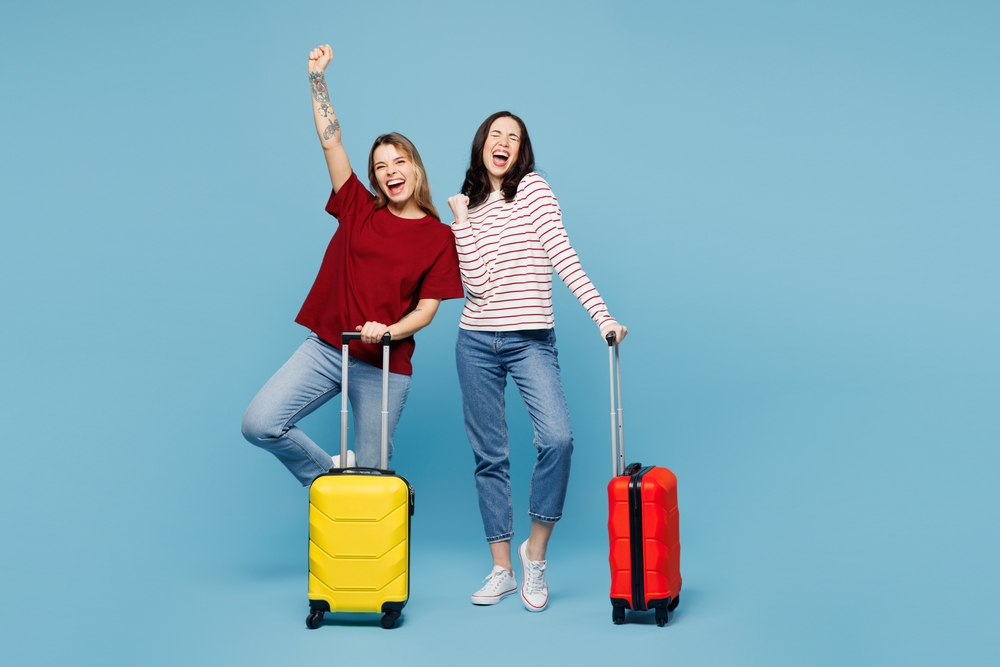
Here’s the truth nobody selling “personal item” bags tells you: the sizer doesn’t care about marketing copy. It cares about millimeters. I pick bags that win on dimensions, soft structure, and compression—so when a gate agent points to the frame, I slide in, smile, and walk on.
“Buy the bag once, skip the fee forever.”
Best underseat backpacks and slim duffels that match the strictest sizers
If a bag can pass Ryanair 40 × 20 × 25 cm and US 18 × 14 × 8 in boxes, it’ll pass almost anywhere. These are the standouts I (and readers) keep seeing go through frames without drama—assuming you don’t overstuff them.
- Cabin Max Manhattan Stowaway 20L (40 × 25 × 20 cm) — Cabin Max
Why it works: purpose-built for Ryanair/Wizz free allowance; soft walls, big zip opening, smart front pocket that stays flat.
Real-world: repeatedly passed Ryanair/Wizz sizers; also fine on Spirit/Frontier as a personal item. - Cabin Max Metz 20L “Ryanair” (40 × 20 × 25 cm) — Cabin Max
Why it works: boxy but soft; the 20 cm depth is the cheat code for European frames.
Real-world: easy sizer win when the front pocket isn’t overpacked. - Narwey 40×20×25 Personal Item Backpack — Narwey
Budget hero that’s sized to spec, with side compression straps.
Real-world: passed Ryanair frames for me twice last winter; fabric is thin but that’s why it compresses. - Tom Bihn Co-Pilot (approx. 33 × 26.5 × 13 cm) — Tom Bihn
Messenger-style organizer, built like a tank but stays slim.
Real-world: business-trip favorite that fits under every seat I’ve tried, including A320 family and 737s. - Aer City Duffel 20L (≈ 44.5 × 28 × 20 cm / 17.5 × 11 × 8 in) — Aer
Why it works: low profile, structured base, and exactly 8 in depth.
Real-world: clean pass on Spirit/Frontier personal-item frames; for Ryanair, keep the top half unstuffed to hit 40 cm height. - Travelpro Maxlite 5 Soft Tote (≈ 18 × 11 × 8 in) — Travelpro
A rare non-rolling “underseat” that’s actually sized for ULCC personal-item rules.
Real-world: easy win on US carriers; compressible enough to manage EU frames when not stuffed at the ends. - Asenlin 25L Personal Item Backpack (18 × 14 × 8 in) — Asenlin
Tuned for Spirit/Frontier; includes low-profile cubes.
Real-world: repeatedly passes 18 × 14 × 8 sizers; too tall for Ryanair unless you underpack and cinch hard.
Why these work: All of them either meet the box on paper or use soft materials that compress on the long or tall side. The real game is the 20 cm/8 in depth—bags that stay slim here rarely get flagged.
Popular models and their real-world fit (when packed)
- Tom Bihn Synapse 19 (≈ 16 × 11.5 × 7.9 in)
Fit notes: depth is perfect; height is ~40.6 cm. It’s soft, so it squeezes to 40 cm if you don’t overstuff the top pocket. Readers report consistent passes on Ryanair with smart packing. - REI Co-op Roadtripper Duffel 20L (≈ 18 × 9.5 × 7.5 in)
Fit notes: nails US 18 × 14 × 8; works under A320/737 seats. For EU 40 cm height, fold or compress one end. - Monos Metro Duffel (≈ 16.5 × 10.6 × 7.1 in)
Fit notes: great on US ULCCs; for Ryanair, watch the 10.6 in width—pack flat items there so it flexes into 25 cm height. - Osprey Daylite (13L) (listed ~43 × 26 × 21 cm)
Fit notes: tall on paper; in practice the soft top compresses. Keep the main compartment half-full and it clears 40 × 20 × 25 at the frame.
Quick context you can trust: ancillary fees are a profit engine, which is why enforcement spikes on busy flights. A 2023 CarTrawler/IdeaWorks report pegs global airline ancillary revenue at over $100 billion, with baggage fees a major slice. Pick a bag that naturally fits and you sidestep that revenue stream entirely.
Cheap fixes: cinch straps, low-profile cubes, and swapping wheels for a soft bag
- Add side cinch straps
$8–$12 webbing straps with ladder locks can shrink depth by 2–3 cm instantly. Route them around the fullest part of the bag and tighten before you approach the gate. - Use low-profile packing cubes
Look for 2–2.5 in height cubes (e.g., ultralight/silnylon styles). Stack them spine-to-zipper so the “thick” edges don’t line up and create a bulge. - Move chargers into jacket pockets
Dense electronics create hard spots that catch on sizers. Put your brick, cables, and power bank in your coat while boarding, then return them to the bag onboard. - Swap wheels for fabric
Wheels and rigid frames kill you at the sizer. A soft 20–25L backpack or duffel usually saves 2–4 cm and 1–2 lb over even the tiniest roller. - Trim the laptop footprint
Replace a bulky hard case with a slim sleeve. You’ll often free up a full centimeter of depth.
Mini pack list that fits 40 × 20 × 25 cm, tested: ultralight down jacket (stuffed around shoes), 1 pair sneakers (stuffed with socks), 2–3 tees, 2 underwear/2 socks, leggings or chinos, toiletries under 1L in a flat pouch, 13″ laptop in a thin sleeve, charger + cable in coat pocket. If I can do a long weekend with that, you can too.
What not to buy
- Hard-shell “personal items”
If it can’t squish, it can’t save you. Many are 18 × 14 × 9 in before wheels—instant fail at 8 in/20 cm depth. - Tall tote shapes
Anything over 42 cm tall will fight the underseat crossbar and Ryanair’s 40 cm height. Go shorter and wider, or choose a backpack/duffel that compresses at the top. - Overbuilt laptop bags
Double walls, heavy foam, and thick frame rails eat your allowance. If the empty bag is 1.2–1.6 kg (2.5–3.5 lb), that’s a red flag for ULCCs. - Underseat rollers
The marketing is tempting, but wheels + handles count and usually push you past 20 cm/8 in. Great for legacy carriers with overhead space included; risky on bare-bones fares.
One last sanity check I use before I commit: lay the bag flat and measure the actual packed height at its thickest point. If it’s under 20 cm/8 in, you’re golden almost everywhere.
Want a printable sizer outline you can tape to your floor—and a quick matrix that matches these bags to each airline’s box? I’ve got both ready. Should I send you straight to the downloads and the live policy links next?
Tools, resources, and my printable cheatsheet
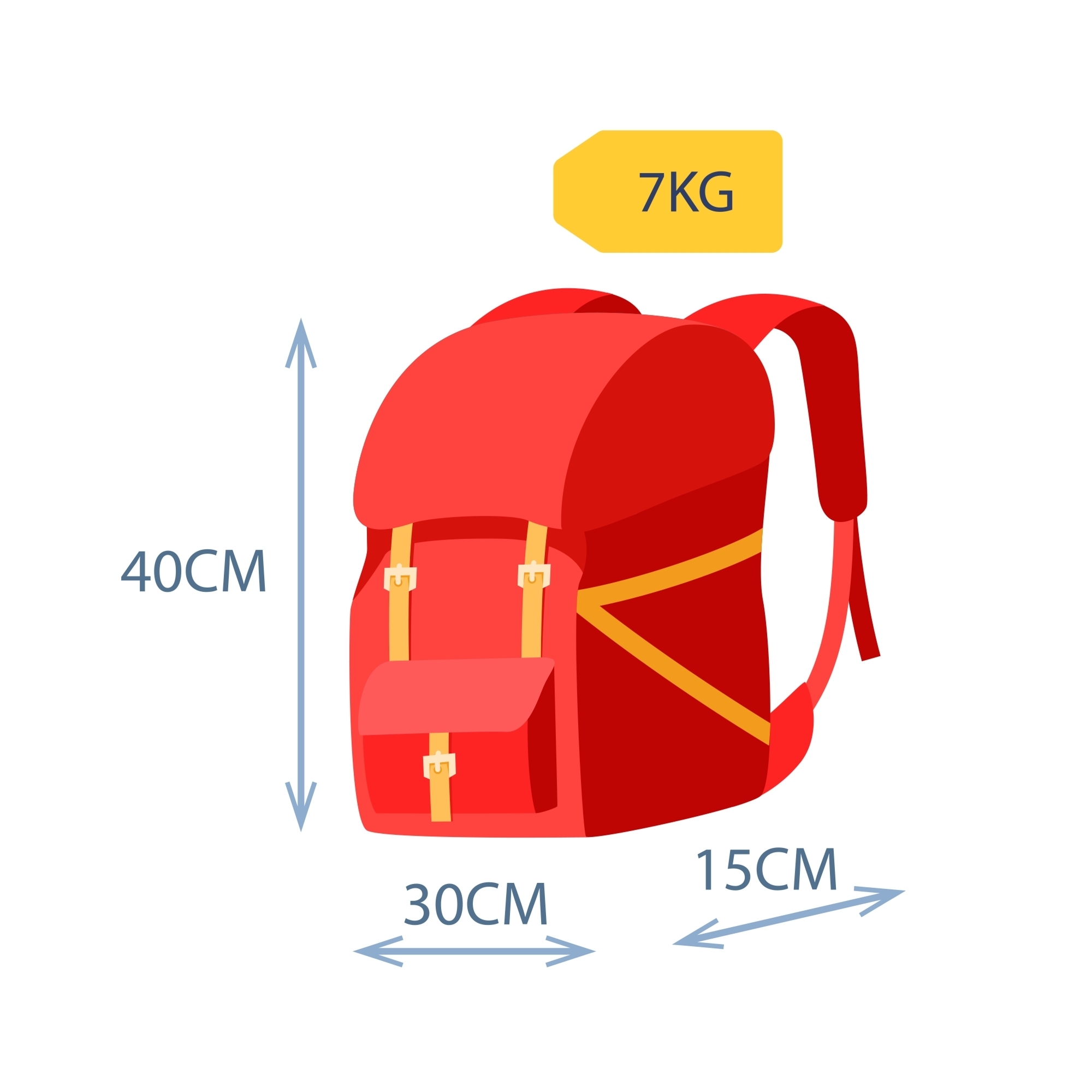
I’m a tools-first traveler. If a simple template or screenshot can save you a $99 sizer fee, let’s use it. Here’s everything I’ve built (and how I use it) to keep “personal item only” trips painless.
Grab my carry‑on sizer kit (free)
I put together a one‑page PDF that you can print, screenshot, or save offline. It’s the quick-check I use before every ultra‑low‑cost flight.
- Underseat sizer rulers (in + cm) with a 1 in / 5 cm test square so you can print to scale.
- Airline-by-airline boxes labeled as “personal item” vs. “overhead carry‑on” so you don’t mix them up.
- “Wheels count” reminder with a soft-bag squeeze tip for frame tests.
- Quick conversion strip for 18×14×8 in ↔ 45×35×20 cm and common ULCC metric sizes.
- Gate-fee pulse so you know what I’m seeing in the last 30–60 days (ranges, not promises).
Print correctly: open the PDF, choose “Actual size” (or 100%), not “Fit.” Check that the 1 in / 5 cm square measures exactly. If you’re on A4 paper, it still works as long as you print at 100%.
How I use it at home: I lay the sheet next to my packed bag and line up the edges. If any side is close, I switch to compression cubes or move shoes to the heel-pocket trick to reduce bulge.
Save the matrix to your phone (offline works)
The same kit includes a mobile-friendly matrix. I keep it in my photos so it’s available even without data:
- iPhone: open the PNG matrix, add to “Favorites” and “Hidden album” if you prefer privacy. You can also set it as your lock-screen for travel week.
- Android: save to Photos, mark as “Favorite,” and make it available offline. A quick widget puts it one tap away.
Pro move: star the airlines you actually fly. If your year is Spirit + Ryanair, you only need two rows burned into muscle memory.
Handy apps and simple automations
- iOS Measure and AR Ruler (Android): quick edge-to-edge checks on packed bags. Measure the thickest point, not the label.
- Notes/Keep template: I keep a “Sizer Check” note with my bag’s packed dimensions and weight. Update it once, reuse forever.
- Calendar reminder: 72 hours before departure, my phone pings: “Verify bag rules — link in event.” I paste the airline’s baggage page into the calendar description when I book.
- Digital luggage scale (tiny, $10–$15): not glamorous, but it stops last‑minute repacks in the security line.
Verify rules before you book (30‑second check)
Policies move. Add‑on bundles change names. Here’s my fast, reliable path to reality:
- Search smart: type “airline name + cabin bag size” or use this: baggage policy site:[airline domain].
- Confirm fare type matters: compare the “Fare benefits” page with the “Baggage policy” page so you don’t mix a larger cabin bag add‑on with a free personal item.
- Look for photos of the sizer frame on the airline page; that’s the box that actually matters at the gate.
- Screenshot as proof with the booking date visible. If you’re challenged later, your record is ready.
Quick tip: When rules are fuzzy, I check the aircraft type on my itinerary. Smaller regional jets and certain high‑load routes are where I see the most strict sizer enforcement.
Community intel I rely on (real enforcement, real fees)
I track fresh reports across frequent flyer forums and traveler communities, then roll patterns into the cheat‑sheet’s gate‑fee pulse. What I pay attention to:
- Airport+time: airports with frequent “all bags in sizers” pushes, especially during peak weekends and holidays.
- Flight fullness: full loads correlate with more checks.
- Frame style: narrow frames catch bulging duffels; round‑edged backpacks slide easier.
- Fee swings: I’ve recently seen US ULCC gate charges cluster around the high double digits, while popular EU routes swing by currency and route demand. Your screenshot + prepay math still rules.
If you had a recent sizer win (or loss), tell me the airline, airport, bag model, and whether it fit with shoes inside. Those details are pure gold for other readers.
Wallet‑card: “smallest boxes” to remember
When in doubt, stick to these personal‑item targets if you’re flying the strictest ULCC routes:
- US baseline: 18 × 14 × 8 in (45 × 35 × 20 cm) — fits most underseat frames when packed smart.
- Ryanair: 40 × 20 × 25 cm — height is the gotcha; keep bags squat, not tall.
- Wizz Air: 40 × 30 × 20 cm — width bites; avoid boxy briefcases that flare at the sides.
- easyJet (free small): 45 × 36 × 20 cm — generous length/height, but watch depth on stuffed totes.
I keep these on the first line of my notes app so I can sanity‑check any bag’s product page while shopping.
Helpful links I recommend
Want solid references to cross‑check policies between trips? I’ve collected the ones worth bookmarking here: my vetted resources. I update that list as airlines tweak sizes, rename bundles, or shift fees.
One last thing: make your own sizer in 5 minutes
- Grab any box that’s smaller than the airline’s frame.
- Cut two strips of cardboard for length and height, measured to the airline’s limits.
- Tape them into an L‑shape “corner.” If your packed bag fits inside the corner without pushing past, you’re safe.
- No box? Tape the outline on your floor and try to slide the packed bag through the rectangle without compression.
Got your kit saved and your bag measured? Good. Now, how do you turn those tools into a no‑fee routine you can run on autopilot the morning you fly? In the next section, I’ll hand you my simple step‑by‑step game plan you can follow without thinking—want it?
Your no-fee carry-on game plan
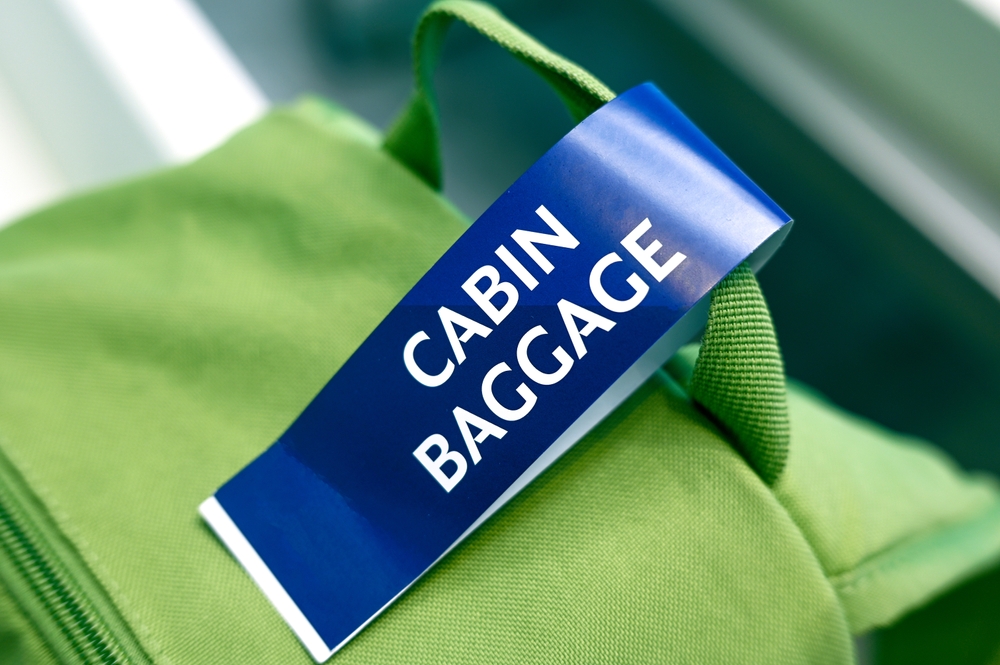
Pre‑trip: set yourself up to win
I start by committing to one bag that works everywhere. If I’m bouncing between the US and Europe, I target the strictest box and pack to that. For most trips, that means a soft underseat bag that can live within 40 × 20 × 25 cm (Europe’s tightest) or 18 × 14 × 8 in (common on US ultra‑low‑cost carriers). If I need one bag to do both, I stick to the smaller metric target and save myself the drama.
- Confirm the box before you buy: check the fare’s baggage section on the airline’s site or app and screenshot it. Rules change, and a screenshot helps if you need to push back later.
- Run a home sizer test: tape the dimensions on your floor and pack your real list—chargers, toiletries, hoodie, snacks. If it doesn’t “drop in” at home, it won’t at the gate.
- Pack for compression: I use soft cubes and a cinch strap across the outside to flatten the profile. Shoes go heel-to-toe with socks stuffed inside; liquids are mini and flat.
- Weigh smart: most US “personal item” fares don’t list a weight limit, but Europe sometimes does for larger cabin bags. I still aim for under 8 kg so it slides easily and looks small.
- Have a “slim mode” plan: one layer I can throw on, one bulky item I can hand-carry briefly, and a top pocket I can empty to my jacket if asked to sizer-test.
Quick reality check: airlines make serious money from extras, and bag fees are a big piece of it. IdeaWorksCompany’s 2023 report with CarTrawler pegged global ancillary revenue north of $100 billion. In other words, enforcement isn’t going away—so the prep is worth it.
Day‑of: move like a pro
On flight day, I make my bag look as small as possible and remove reasons for a sizer check.
- Wear the bulk: jacket on, heavier shoes on my feet, battery and cables in pockets. My bag should look flat and light, not stuffed.
- Arrive a little early: calm passengers get fewer “let me measure that” interactions. If I see sizers rolled out at the gate, I switch to “slim mode.”
- Board early if it’s cheap: a small fee for early boarding or priority can be less than a gate penalty. I’ll take that trade every time on tight fares.
- Carry confidence: backpack on both shoulders or a soft duffel at my side. I don’t roll a wheeled bag into a ULCC gate unless I’ve paid for overhead. Visual cues matter.
- Underseat first: once onboard, I push my bag long‑side first under the seat in front and keep it there. No overhead fishing that invites attention.
Two real moments from my notes:
- Las Vegas → Los Angeles on a $29 fare: agent looked at my backpack, then at the sizer. I slipped my hoodie on, moved my charging brick to a coat pocket, and the bag slid in clean. No fee, no fuss.
- Porto → London on a strict small‑bag ticket: I paid a few euros for earlier boarding. Same bag, same size, different outcome—nobody asked because I was upstream of the crunch.
If you still get charged
Sometimes you do everything right and still get hit. Don’t let the moment rattle you—document and follow up.
- Pay, then protect your case: you don’t want to miss the flight. Keep the receipt, note the time and gate, and ask the agent to write the measured size if they’ll do it.
- Take photos: if allowed, snap your bag inside the sizer, from a couple angles. If the sizer isn’t available, take a photo against a measuring tape at the gate.
- Ask politely on the spot: “I measured this to your posted size and it fits the frame—could we try the sizer together?” A calm tone gets better outcomes than a debate.
- File with customer care after the flight: include your booking code, receipt, photos, and the screenshot of the published size for your fare. Ask for a refund or travel credit because your bag met the stated allowance.
- Escalate if needed (US/EU): if the airline refuses and you have clear evidence, submit a complaint to the US Department of Transportation at transportation.gov, or use your national enforcement body in Europe via the EU list here: EU NEB directory. Keep it factual and brief.
- Try social support: a short message with your photos often gets attention from airline social teams. Stay friendly; ask for a review, not a confrontation.
Sample note:
“Hi team, I was charged a gate fee on XX123 even though my bag fit your posted personal‑item size. Attached are photos of it in the sizer and a screenshot of your allowance. Could you review and refund or issue a credit?”
Tip: act quickly. While there’s no universal deadline, I aim to file within 72 hours while details are fresh. Keep your boarding pass and gate receipt until it’s resolved.
One‑page checklist you can screenshot
- Before booking: check the fare’s personal‑item dimensions; screenshot.
- Week before: pack a test load; confirm it fits a taped box at home.
- Night before: set “slim mode” items on top (hoodie, small stuff to pockets).
- At the airport: wear bulk, carry confidently, board early if cheap.
- If challenged: ask to try the sizer, flatten soft sides, don’t argue.
- If charged: pay, save receipt, take photos, file with customer care.
Why this works: crowded flights and peak seasons see more checks—DOT complaint data shows travel issues spike around holidays—so the fewer reasons you give an agent to look twice, the better your odds.
Final word
Keep it small, pack smart, and move early. Do that, and you’ll skip the sizer drama—and the gate fees. I’ll link the full guide and a printable cheatsheet on https://travelsites.com/blog/ so you can keep it handy for your next ultra‑low‑cost run.